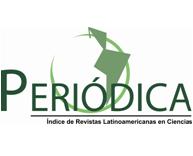PRESENCE OF PESTICIDES IN THE KARSTIC AQUIFER BETWEEN THE MUNICIPALITIES OF MÉRIDA TO PROGRESO, YUCATÁN, MÉXICO
Keywords:
pesticides, organochlorades, groundwater, pollutionAbstract
Pollution by pesticides has become relevant worldwide due to its serious effects on living organisms. Pesticides act as endocrine disrupters, affect the immune system, decrease the reproductive capacity and some are potentially carcinogenic for human beings. For the characteristicsmentioned, their high environmental persistence and bioacumulation potential in fat tissues,since 1970, some of the organochlorade pesticides have been restricted in many countries, and it is necessary their monitoring. In the Yucatan State, the predominant karstic nature of soil enables the infiltration of a wide range of substances to the underground hydric resources, polluting them. Particularly, it can be observed the north occidental state region, which is characterized by the presence of human settlements, agricultural activity and ground water flows oriented towards the north coast. The present study presents the results of a research carried outin the north occidental region of the Yucatan State (between the municipalities of Merida and Progreso) about the groundwater pollution by the presence of4,4´-DDT, 4,4´-DDD, 4,4´-DDE, lindane, endosulphan I and endosulphansulfate. The DDT concentrations and its derivatives as well as the endosulphan found in the area represent a risk for human water consumption, according to the mexican regulatory NOM-127-SSA1-1994.




















